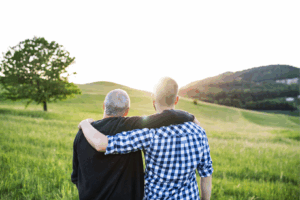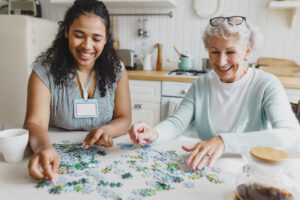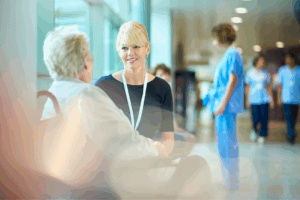“It’s got a good beat, and I can dance to it.”
That’s a line from the Dick Clark show American Bandstand, but it became a widespread saying. Everyone instantly knows what it means. It describes music that gets into your heart, that insinuates itself into your arms and legs, and that starts to move your body in ways you could only imagine before (and sometimes in ways you couldn’t). Moving to the music is perhaps the purest combination of the mental and the physical, as the electricity of the sounds runs through your brain, jolts into your body, and synthesizes into something pure.
It’s this combination that has researchers excited about pairing music therapy and exercise for older adults. For years, we’ve known the benefits of exercise for your aging loved one, and there have been remarkable breakthroughs surrounding music therapy for mental health, but we don’t feel those need to be separated from each other.
Mental and physical health go hand in hand. Music stimulates the mind, and movement helps with all the body’s functions. By combining the two, your older loved one can get the most out of life—more fun, more social interaction, and a better chance at independence. Music and movement waltz together across the spotlight-swept dance floor of our lives.
The Benefits of Music Therapy
Chances are you can remember the phone number to a long-defunct business thanks to a relentless jingle you heard in your youth. You can hear a song you haven’t listened to in years and still sing along with the lyrics, remembering every pause and drawn-out note. That’s the way music works in our brain. There’s something about its structure that lodges into the neural pathways of our minds. But it isn’t a one-way street. We remember music, but music also improves our memory.
That’s why researchers on aging have been working on music therapy with particular intensity over the last several years. Music can help memory and fight both the causes and symptoms of depression. Even more excitingly, music can trigger memories that have long since been dormant, even in people with advanced Alzheimer’s. Music has been shown to bring people back, if only briefly, from whatever mysterious recesses the mind goes to when afflicted with dementia.
We also encourage older adults to take music classes, and learn new instruments. Doing so requires mental and physical coordination, and also strengthens memory, cognitive functions, endurance, and self-confidence. Anthropologists and evolutionary biologists still aren’t sure why we started making music in the first place, but it is clear it has a central role in who we are as people, no matter what our age.
Movement Therapy and Physical Health
Movement therapy is more than just dancing or walking or swimming. It’s a creative expression that is “all about moving your body authentically.” By encouraging people to move in formless, creative, expressive ways, researchers feel that older adults strengthen their bodies’ physical connection to their brain, and even adults with dementia can form a reconnection.
This sort of movement is not dependent upon music. Some researchers believe that it’s best to find an internal rhythm, and there’s certainly something to be said for that—beats of different drums, and all. But music can also be a stimulus for movement therapy, and that’s where everything can combine.
Dance for Yourself: Combining Music and Exercise In The Bay Area
Put on a song. Hit play on the CD or put on Pandora or drop the needle on the record. No matter how you do it, once the music starts, people will start moving. They almost can’t help it. It’s practically involuntary. Music makes people feel more relaxed, more sociable, and ready to lose some inhibitions.
When it comes to mental and physical health, there’s no right or wrong way to move. Like with movement therapy, it’s all about expression. Dancing, for older adults, can be with partners, or in a group like a square dance, or even just on their own. And it doesn’t have to be the same way everyone else is dancing. It’s important to hear the music and just let it move you.
This kind of movement is amazing for older adults. According to a long-term study published in the New England Journal of Medicine, “aging adults who danced regularly had a 76 percent reduced risk for developing dementia.” Part of this is because of improved cardiovascular health. But there is a deeper reason as well.
Think of yourself while you’re dancing. You’re making split-second decisions on how to move your body, almost to the point where you don’t recognize those decisions. They happen faster than thought most of the time. These rapid-fire decisions strengthen neural connections, something extremely important for older adults.
The Bay Area is a hot spot for dance classes for older adults, which are also great for socialization. Some of our recommendations are:
- Axis Dance (Oakland)
- Veterans Memorial Senior Center (Redwood)
- Movimiento de Arte y Cultura Latino Americana (San Jose)
Caregivers can easily find, or even create at home, a dance ritual or experiment or routine that will work for the older adult in their life. We’re learning so much more about how the mind and the body interact; the more we learn, the more we realize the power of music to strengthen that connection.
Combining music and exercise allows us to help our aging loved ones fully express that humanity that is always there, no matter what the age. Let the notes creep into their heads, through their body—and express themselves through a lifetime of joyous memories.
Institute on Aging offers a wide range of programs, services, and online resources to help older adults and their caregivers live independently, with dignity and adventure. Get in touch with us today to learn more.







